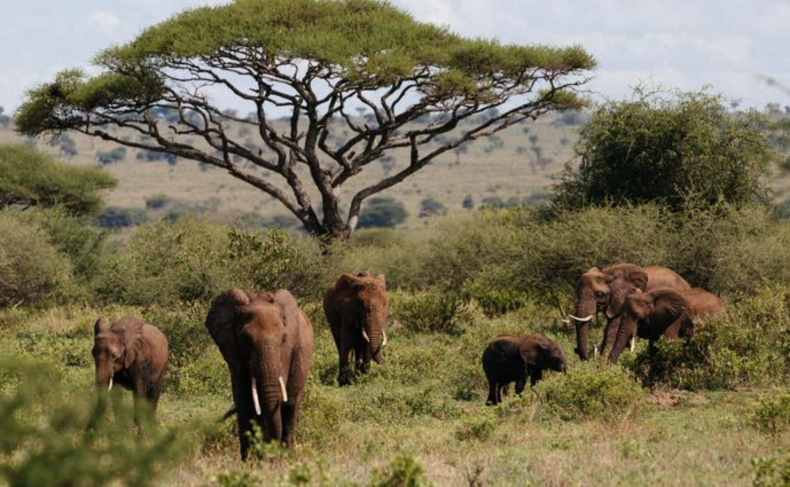Giant ancient animals known as megafauna, originally thought to have gone extinct due to the arrival of human beings, have now been found to have perished for other reasons.
In a paper published in the journal Science on Thursday, researchers describe how African and Arabian megafauna, namely giant elephants, actually were wiped out by climate change, in a process that began long before humans arrived on the scene.
"The major driver is still at large, but all evidence points to it not being humans or their ancestors. Or at least, it appears that the extinctions, especially of large species, began much earlier than the development of advanced butchering technology and hunting behavior by humans," Faysal Bibi, the study's co-author and a researcher in evolution and ecology at the Museum für Naturkunde in Berlin, told Newsweek.
Megafauna were large animals, some of which remain today, including elephants, moose and whales. There were several megafauna species that went extinct fairly recently in geological time during the Pleistocene epoch, such as wooly mammoths, straight-tusked elephants (Palaeoloxodon), giant deer and scimitar-toothed cats.

"In general, large mammals (not just megafauna, which is often defined as species larger than 2,200 pounds) were much more diverse in the past than today, whether one counts species of antelopes and buffaloes, pigs, hippopotamus, giraffes or elephants," Bibi said.
"In the context of our study, which focused on African and Arabian mammals, the largest species were fossil elephants, with some reaching over 10,000 kilograms (about 22,000 pounds). Just how large they could get is debatable, but probably not too much more than that."
It was previously assumed that because the arrival of humans around 100,000 years ago coincided with the extinction of many of these species, they were the reason for their demise. This new research challenges this assumption.
In the paper, Bibi and co-author Juan L. Cantalapiedra, an evolutionary ecologist at the University of Alcalá, Madrid, describe how they used measurements of thousands of fossil teeth to reconstruct the size and abundance of African mammals over around 30 pounds in weight across the past 10 million years. They found that in animals over around 90 pounds, animals decreased abundance as they increased in size.

This pattern aligns with the ecological rule of metabolic scaling, which means that the larger an animal is, the fewer of those animals exist. They discovered that rather than human hunters having wiped out massive species, the animals' lower abundance combined with changes to the environment resulted in their decline.
The researchers found that rather than occurring 100,000 years ago when humans emerged, these species began declining long before, up to around 4 million years ago. In the paper, they suggest that environmental factors, such as the long-term decrease in global temperatures and the expansion of tropical grasslands, drove the megafaunal extinctions.
"The driver would then be environmental, and the main suspects are global cooling and drying, and decreasing CO2 levels, which would have caused major changes in habitats and the vegetation these herbivores feed on," Bibi said. "But the exact mechanism by which these changes could have so selectively targeted larger species has not been fully explained, and it is hard to test given that our modern world is so poor in such very large mammals."
The authors state that they found that global productivity decreased by around two-thirds over the prior 5 million years, which likely lessened the available food for larger animals.
They hope that these findings may help to inform modern conservation efforts and help mitigate the effects of climate change on the extinction of our current megafauna and other species.
Do you have a tip on a science story that Newsweek should be covering? Do you have a question about megafauna? Let us know via science@newsweek.com.








